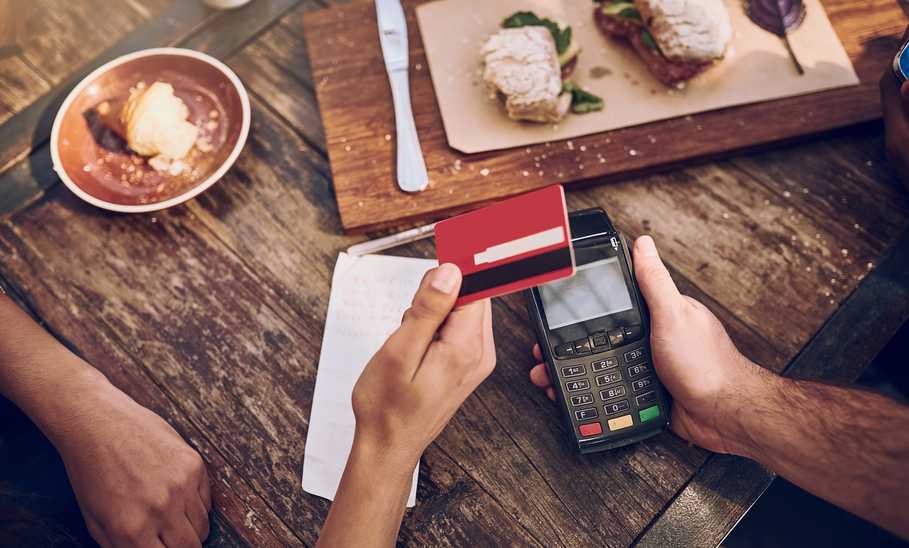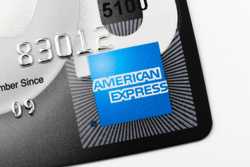What is a Credit Card Chargeback?

Our evaluations and opinions are not influenced by our advertising relationships, but we may earn a commission from our partners’ links. This content is created by TIME Stamped, under TIME’s direction and produced in accordance with TIME’s editorial guidelines and overseen by TIME’s editorial staff. Learn more about it.
A credit card chargeback is when a bank returns money to you because a credit card charge was fraudulent or you bought something online that wasn’t delivered or was defective. Except for fraud, you would usually request a chargeback only after you tried to get a refund from the merchant and were not successful.
A credit card chargeback request involves four main participants—the consumer, merchant, credit card issuer, and credit card network. The chargeback is preceded by a credit card transaction that involves two additional participants, the credit card processor and payment gateway. All play a role in the overall process that ends in a chargeback request.
| Participant | Description | Examples |
|---|---|---|
Consumer | Person who initiates the credit card chargeback request | Fraud; Missing/defective; product; Wrong price; Wrong product |
Merchant | Business where the credit card was used to make a purchase | Amazon; Kroger; Marriott |
Credit card issuer | Financial institution that issued the credit card | Chase; PNC Bank; U.S. Bank |
Credit card network | Credit card brand name | American Express; Mastercard; Visa |
Payment processor | Company that executes the transaction | PayPal; Clover; CashApp |
Payment gateway | The technology (software) that encrypts and transmits transaction details to payment participants as part of payment processing | PayPal; Square; Stripe; Major banks |
The chargeback process begins when the consumer contacts the credit card issuer to report a problem. This could include a transaction the customer doesn’t recognize, a missing or damaged product, or a transaction with the wrong price.
The consumer initiates the chargeback to get their money back or have the transaction canceled. A chargeback is similar to a refund except that a refund is usually requested from a merchant while a chargeback request goes directly to the credit card issuer.
Once initiated, chargebacks go back and forth among the issuing bank, the merchant (and its bank), and the customer until one of them agrees to accept liability or until the credit card network is asked to resolve the dispute through arbitration.
There are several situations that could result in a chargeback request.
As far as the law is concerned, the federal Fair Credit Billing Act mandates that if your physical credit card is stolen, the bank can only hold you responsible for up to $50 in fraudulent charges depending on when you report the card stolen. If your card number is stolen due to a hack or data breach, you have no liability.
In addition, many banks have a zero liability policy of their own including:
If you suspect fraud may be the reason for your credit card problem—i.e., you don’t recognize the transaction, especially after your card was stolen or you have reason to believe you are the victim of hacking—initiate a chargeback with your credit card issuer (bank).
When you have a dispute with a credit card charge that is merchant-related—i.e., you made a purchase and it didn’t turn out well—you should always start by contacting the merchant to resolve the issue without involving the credit card issuer or network.
If working with the merchant isn’t satisfactory, only then should you initiate a chargeback. Keep in mind, however, that there is a time limit to initiate a chargeback. U.S. law gives you a minimum of 60 days, but most credit cards give you 120. Refer to the terms of your credit card to be sure.
If you contacted the merchant and are not happy with the response you received, go to the issuing bank’s website or call them to ask about the process they use for initiating a chargeback request. Most banks let you file a chargeback request online, by phone, or by mail.
Expect to be required to provide supporting information or documents including receipts, copies of an invoice, contract, or any communication you’ve had with the merchant. This process can take up to 90 days and sometimes more.
For example, here is the process for filing a dispute with U.S. Bank:
Online or mobile app
Phone
Call 1-800-USBANKS (872-2657) to speak with a banker.
Include the following information:
Send the information to:
Cardmember Service
PO Box 6335
Fargo, ND 58125-633
The precise process after you submit a chargeback request varies by credit card issuer (bank), but, in general, includes the following:
Even if your store has a “no refund” policy, the Fair Credit Billing Act permits consumers to file a chargeback request. Even so, it’s best to clearly display your refund policy and make sure your employees know it.
If nothing else, this practice may be helpful if a customer’s dispute ends up in arbitration and you are asked about your policies and how well documented they are. Since banks tend to favor customers over merchants in chargeback disputes, you are well-served to document clearly and consistently and follow all rules of credit card networks.
If your business accepts credit cards, you will likely deal with chargebacks. The best way to minimize chargebacks is to utilize best practices on credit card use and make sure your employees know them.
Here are some examples of situations that lead to chargeback requests and how to preemptively prevent customers from requesting one in the first place.
| Chargeback reason | How to prevent the chargeback |
|---|---|
Customer’s credit card has been stolen or has been compromised via a security breach resulting in an unrecognized transaction on the credit card statement. | Get cardholder’s signature on the receipt. Require expiration date and security code for online transactions. Consider calling the customer for unusually high transactions. |
Shipping or delivery issue resulting in the product not arriving when expected. | Ship products ASAP. If shipping will take time, notify the customer. Respond to customer concerns quickly. |
Credit/refund not processed. | Have a clear written refund policy and process refunds quickly. |
Defective product. | Make sure product descriptions are accurate. Package products securely to avoid damage. Respond quickly to complaints and offer a replacement or refund. |
Unrecognizable business name. | Make sure your business name appears on all billing statements. |
Failure to cancel subscription. | Send advance notice of renewals and respond quickly to cancellation requests. |
For the consumer, initiating a chargeback request likely means you’ve already failed to resolve the issue with the merchant. For the merchant, it means you may have missed an opportunity to resolve the issue on your terms and, importantly, without paying a fee to the bank.
A chargeback is a process initiated by a customer to receive their money back after they formally dispute the transaction with the card issuer (bank). A refund is the return of money to a customer by the merchant without involvement of the bank. The result is the same but the process is different.
U.S. law sets a minimum time limit of 60 days to initiate a chargeback. Most credit card issuers give customers 120 days to dispute a charge.
The information presented here is created by TIME Stamped and overseen by TIME editorial staff. To learn more, see our About Us page.




